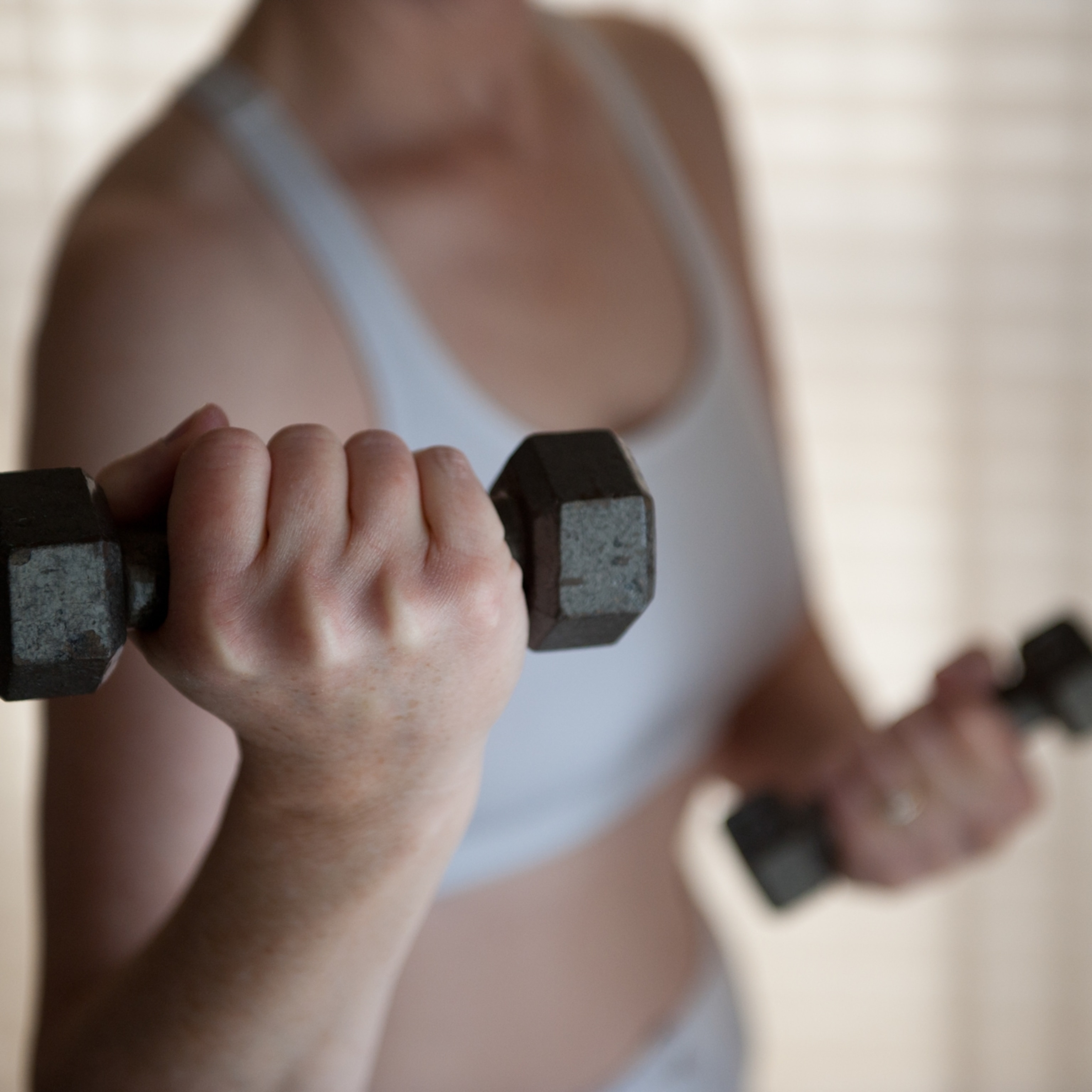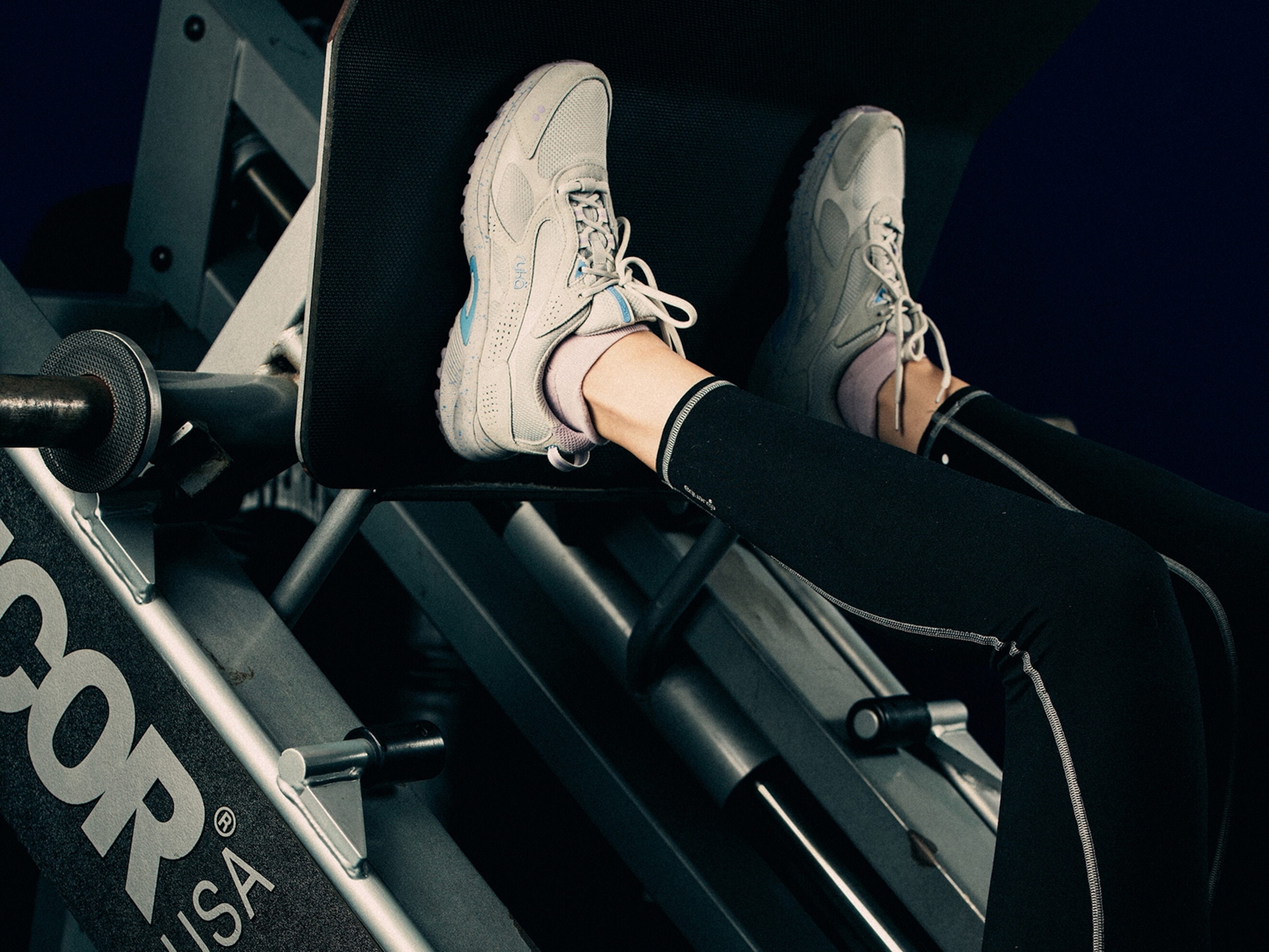
To Burn Fat, You Could Exercise … or Shiver
New research points to shivering as a potential aid for weight loss.
In the bleak midwinter, here's a warming thought: All that shivering might be getting you in shape.
According to a new study, 15 minutes in the cold can be the metabolic equivalent of an hour of exercise. Both have an impact on our two main types of adipose tissue, aka fat.
White fat—the blobby kind that bulges hips, thighs, and bellies—stores energy. Brown fat—prevalent in infants but less abundant in adults—generates heat and burns calories when stimulated.
Last year scientists at the U.S. National Institutes of Health monitored ten healthy adult subjects—a mix of men and women—as they exercised in a 65°F (18°C) lab. Later the same subjects lay on a bed as the temperature fell to a shiver-inducing 53°F (12°C).
In both tests the subjects' muscles contracted, producing a hormone called irisin that boosts body heat and creates brown fat cells (which get their color from their high iron content) out of white ones.
The study, published this week in the journal Cell Metabolism, is the latest look at brown fat and its benefits. Until just a few years ago, it was thought that humans lose their brown fat in early infancy. Since a landmark 2009 study in the New England Journal of Medicine, however, we've known that many—perhaps all—adults have stores of it, though in varying amounts.
To get a better grip on the science of shivering, we talked with the study's lead author: Dr. Francesco Celi, chair of the Division of Endocrinology and Metabolism at the Virginia Commonwealth University School of Medicine and a former staff clinician at the National Institute of Diabetes and Digestive and Kidney Diseases.
In 2012 there was some important research on brown fat in rodents. How did that study lead to this one?
Two years ago a group of scientists were studying exercise in mice, and they made the seminal discovery that skeletal muscle produces a hormone called irisin, which can stimulate the activity and mass of brown fat.
But we were puzzled: It doesn't make much sense that something that produces heat, like skeletal muscle, would generate a hormone that drives the increase in energy expenditure from another [thing like] brown fat.
So we thought outside the box and considered another form of muscle activity: shivering. Shivering is prompted by cold—it's [an ancient biological] survival mechanism [that helps us] maintain our core temperature. That's vitally important in preventing hypothermia.
So we realized that shivering, rather than exercise, could be the primary driver of irisin secretion. And we set up a series of clinical experiments to demonstrate that.
Some adults have more brown fat—and lower glucose—than others. Why is that?
That's a great question. First of all, we still don't know if every adult has brown fat. We just know that leaner individuals tend to have a greater amount of it [than heavier people]. But we don't know if [it's genetic or for some other reason].
Nor do we know what the effects are of chronically stimulating brown fat in adults. And that's critical. We need to learn what all the metabolic consequences are of brown-fat activation.
[Our assumption], though, is that it would lead to an improvement of metabolism—and possibly to weight loss or maintaining weight loss.
Shivering is just one of our responses to cold, right?
[Humans have] three mechanisms to defend against cold. One is called vasoconstriction: Blood flow to the skin decreases, which increases the body's ability to maintain temperature in the core [and protect vital organs].
The second one is called nonshivering thermogenesis. It's probably related to brown fat, [and basically means] all of the chemical reactions that get activated during cold but don't result in muscle contraction. Brown fat is the most efficient means of generating heat—an analogy would be a [super-efficient] furnace.
The third one is shivering, and it's basically a last resort—unpleasant and highly inefficient. But it does contract the muscle fibers, which can produce enough heat to maintain your core temperature.
Irisin is at the center of this. What is it, exactly, and how does it work?
Irisin is [a hormone] produced by muscle contractions, either by exercise or shivering. Once it's produced, it moves through the blood and turns white fat cells into brown ones.
Does this mean that exercise is, metabolically speaking, just another form of shivering? And that if I go and exercise in the cold, I'll burn twice as many calories?
I doubt that there is an additive effect. Maximum exercise, as we measured during our experiments, did not produce any added amounts of irisin as compared to shivering. So I really doubt that exercising and shivering [at the same time] would do anything—aside from making you miserable—that would help you burn [twice as many] calories.
Do other species have this capacity?
Other species are not well studied. But we know that brown fat is present in hibernating mammals.
Going forward, what are the health implications of your findings?
[We have to see] whether it's possible to use this discovery for weight loss, or to maintain weight loss. But it's a promising pathway to look at, just from the substantial improvement of metabolism. [That could help with] diabetes [and obesity and a condition called fatty liver]. What we need to understand is whether there is any genetic difference in the response to this pathway.
[One thing we know is that] adaptive thermogenesis—the response to cold exposure—can be activated even by minimal changes in temperature. In our study we demonstrated that just by lowering the thermostat from 74°F (23°C) to 68°F (20°C) is sufficient to generate a measurable increase in energy expenditure.
That's not [quite the same thing as] shivering. But it's still measurable—and, potentially, clinically significant.
This interview has been edited and condensed for clarity.








